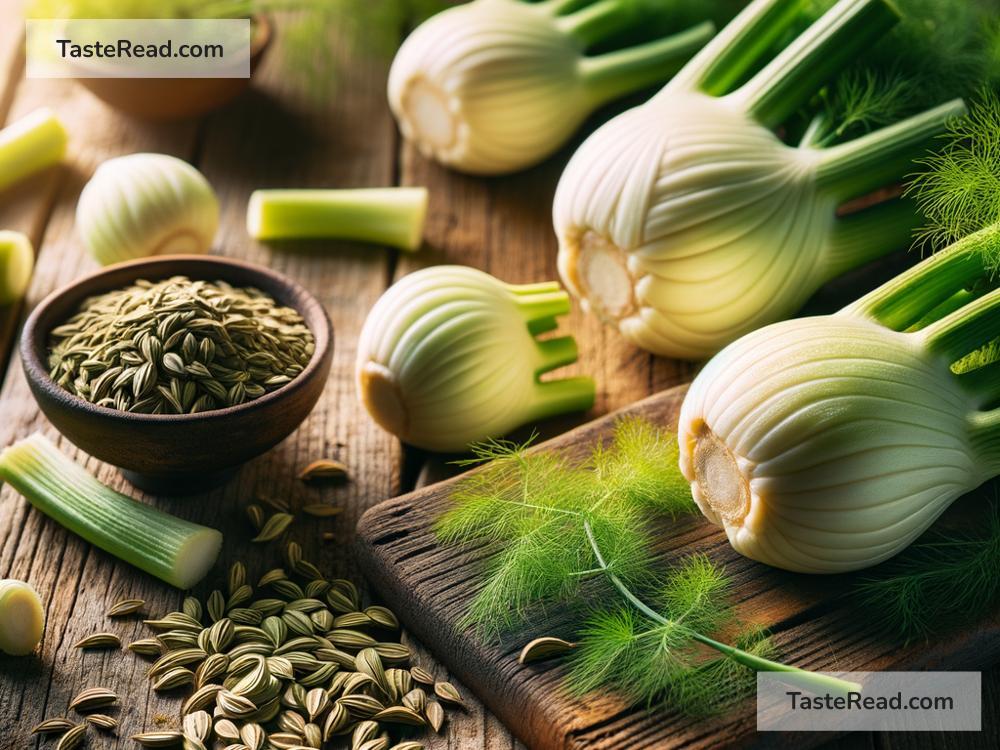The Fascinating Chemistry Behind Fennel’s Licorice Flavor
Have you ever enjoyed the sweet, distinct flavor of fennel and wondered why it tastes so much like licorice? Fennel, a popular ingredient in recipes around the world, owes its unique licorice-like taste to a fascinating mix of chemical compounds found in its seeds, bulbs, and leaves.
In this blog post, we’ll explore the science behind fennel’s flavor and dive into why certain compounds make it taste similar to licorice. Don’t worry—we’ll break it all down so that even those of us without a chemistry background can learn and appreciate the magic of fennel!
What is Fennel?
Before we jump into the chemistry, let’s talk a little bit about fennel itself. Fennel is a flowering plant belonging to the carrot family (Apiaceae). It’s native to the Mediterranean region but is now grown worldwide because of its rich flavor and multiple uses in cooking, herbal remedies, and even teas.
Fennel has a mild, sweet flavor reminiscent of licorice or anise, which makes it a favorite ingredient in soups, salads, and seasonings. But why does this humble plant taste so much like licorice? The answer lies in its chemical compounds.
The Main Compound: Anethole
The primary reason fennel tastes like licorice is because of a chemical compound called anethole. Anethole is a naturally occurring aromatic compound found in fennel as well as in other plants that share a similar flavor, like anise and star anise. It is also responsible for the licorice taste in actual licorice root.
Anethole has a sweet, mildly spicy taste, which contributes to fennel’s unique profile. This compound dissolves well in fats, making fennel’s flavor especially noticeable when cooking with oils or butter. Interestingly, anethole is not only flavorful but also responsible for creating a cooling sensation in the mouth—similar to menthol, though less intense. This sensation adds to the feeling of refreshment often associated with fennel and licorice-flavored items.
A Simple Look at Anethole’s Chemistry
Now, let’s take a step into chemistry (don’t worry—it’s not too complicated!). Anethole belongs to a group of compounds called phenylpropenes, which are found in aromatic plants. Its molecular structure includes elements like carbon, hydrogen, and oxygen arranged in a way that gives it its distinct flavor and aroma.
Because anethole is hydrophobic (meaning it doesn’t mix well with water), it tends to stay concentrated in oils and essential extracts of fennel seeds. That’s why fennel oil, often used in perfumes and food flavorings, has such a strong and recognizable licorice-like scent.
Other Flavorful Compounds in Fennel
While anethole is the star of the show, fennel’s flavor is more complex than just one compound. Other chemicals contribute to the plant’s unique taste and aroma. Here are a few of them:
-
Estragole
Estragole is another phenylpropene found in fennel. It has a sweet and spicy aroma that complements anethole and enhances the licorice-like flavor. Estragole is also found in other plants, like tarragon and basil. -
Limonene
Limonene gives fennel a slightly citrusy undertone. It’s responsible for adding a fresh and zesty note to fennel’s flavor profile and makes the plant even more palatable in various dishes. -
Fenchone
Fenchone contributes a bitter and earthy flavor to fennel. When balanced with the sweetness of anethole, it creates the layered taste we recognize in fennel. Fenchone is known for its woody aroma, which also adds a herbal character to fennel.
Together, these compounds create a harmony of sweet, spicy, and earthy flavors that make fennel one of the most versatile herbs in the kitchen.
How Does Fennel Compare to Licorice?
It’s no coincidence that fennel tastes so similar to licorice—both contain high amounts of anethole. Licorice root also has other compounds that fennel doesn’t contain, like glycyrrhizin, which gives licorice candies their characteristic sweetness. Fennel, however, has a milder and more complex taste due to the combination of anethole, estragole, limonene, and fenchone.
If you’re not a fan of the full-on intensity of licorice, fennel may be a gentler alternative to enjoy that same flavor profile in your cooking or even as a snack.
Beyond Flavor: Health Benefits of Fennel’s Compounds
In addition to their role in flavor, fennel’s chemical compounds offer a variety of health benefits. For example:
- Anethole has anti-inflammatory and antimicrobial properties, which can help protect against infections and reduce inflammation in the body.
- Fenchone is known for aiding digestion and easing bloating.
- Limonene is thought to have antioxidant properties that can support overall health.
This makes fennel not only a delicious choice but also a beneficial ingredient in herbal remedies and teas.
Conclusion
Fennel’s licorice-like taste can be attributed mainly to anethole, a sweet and aromatic compound, along with other flavorful chemicals like estragole, limonene, and fenchone. Together, these compounds create fennel’s signature taste, which has captivated palates for centuries.
Whether you enjoy it roasted, raw, or as an herbal tea, fennel offers not just a delightful flavor but also potential health benefits. So the next time you savor that unmistakable licorice-like taste in fennel, you’ll know exactly where it comes from and why it’s so special.

